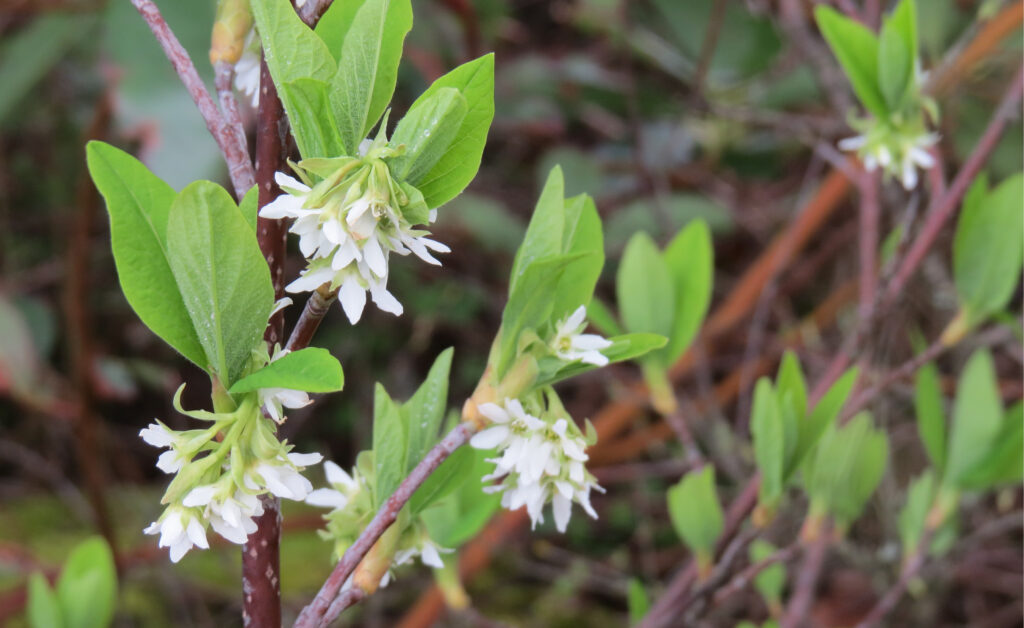story and photo by Tina Kelly –
I passed a sure sign of spring last week. It wasn’t ornamental daffodils, though they were certainly abloom. I had spotted a shrub with small clusters of white flowers and relatively few leaves. June plum, or osoberry (pictured at right) is one of the first native plants to bloom for the season. While other plants often burst into lush foliage before flowering, June plum gets right to producing blossoms. We’ll soon see red flowering currant, followed by other native plants that flower in succession. We’ll feast our eyes on yellows, blues, purples and pinks. If we look.
Do you know the names of any local native plants? Not long ago, a study showed children can identify 1,000 corporate logos but only a handful of plant and animal species that are native to their region. Species in our yards and communities go unknown and nameless while we recognize the makers of toys, burgers, running shoes and cars.
Spring is the season of growth, of birth, of renewal. The days are getting longer, increasing our opportunities for getting to know and understand the nature around us. Follow these tips to connect and learn about our wild neighbours:
• Make repeat visits to the same location (easy if you start with your own yard!). Some plants are easier to identify at specific stages of growth (i.e. flowering, fruiting).
• Be patient, be still. Chances of spotting animals improves when we lower our physical or noise impacts.
• Focus on the big and the small; consider using a magnifier and binoculars.
• Look up for birds and bird nests.
• Listen. Birds are also identified by sound. Grab a recording to help you identify the species.
To truly enjoy the natural world, unplugging from technology is usually sound advice. Yet, a cell phone is a useful tool for uncovering the identities of plants and wildlife. The iNaturalist app (or website) fosters a community connecting naturalists, scientists and those curious about nature. Anyone can upload species findings, through pictures or sound, and experts or other knowledgeable users provide help with identification. You can track your observations and collectively, entries form a repository of data that helps highlight, understand and protect biodiversity.
Spring is the perfect time to start, or continue, your iNaturalist adventure and there is also added incentive courtesy of the CRD. The City Nature Challenge takes place April 26 to 29. Sign up to represent Greater Victoria and be entered to win prizes that will help deepen your connection to nature, including a Smartphone macro-lens, for taking yet more nature pictures, and a garden centre gift card. Visit www.crd.bc.ca/biodiversity for more information including iNaturalist training videos and documents as well as identification guides for local species of flora and fauna.
I recently overheard someone say “after all expertise is not the goal, curiosity is.” By the end of spring we don’t need to be biologists or learn the names of 1,000 species to counter those 1,000 logos; we just need to have been, and to be curious enough to continually grow our nature knowledge. Nature is all around us, if you look.




